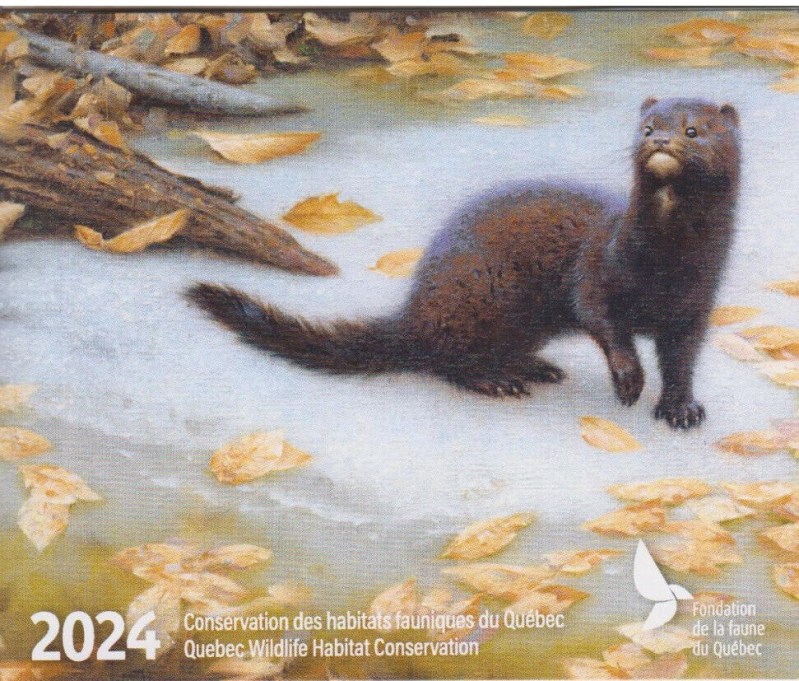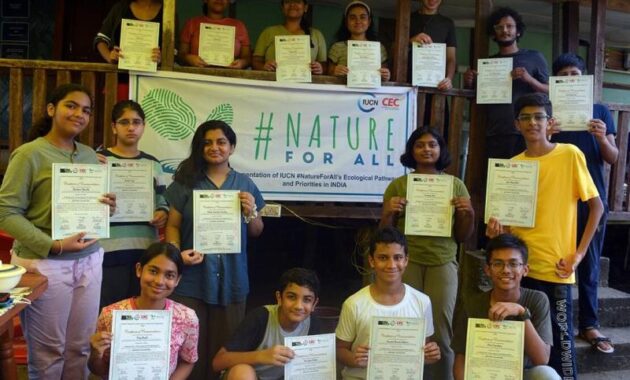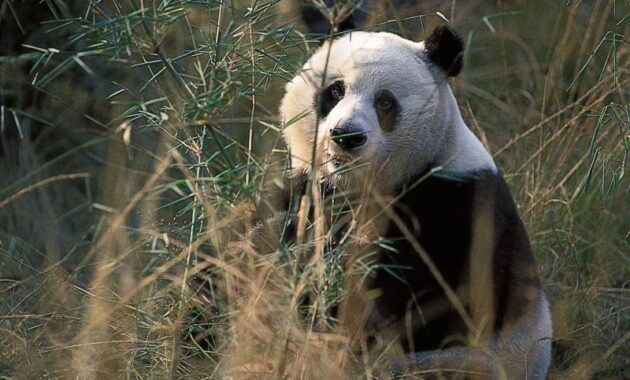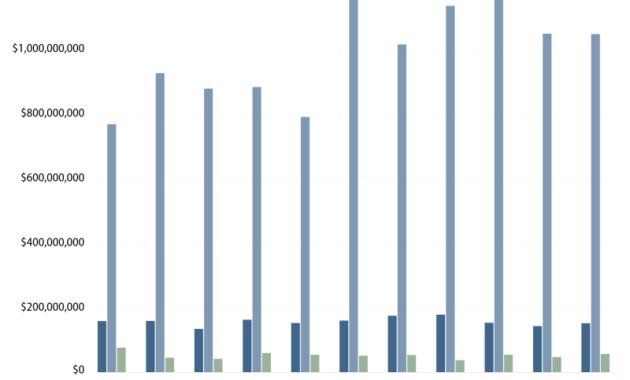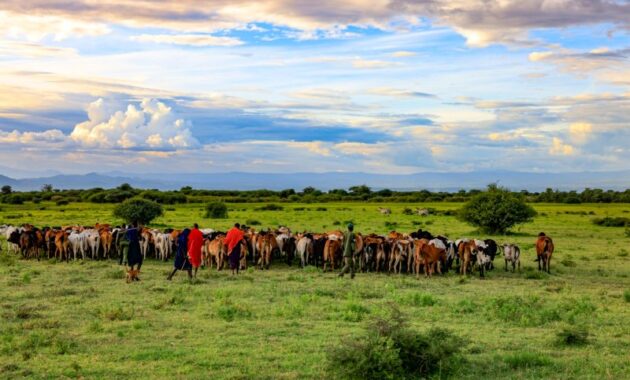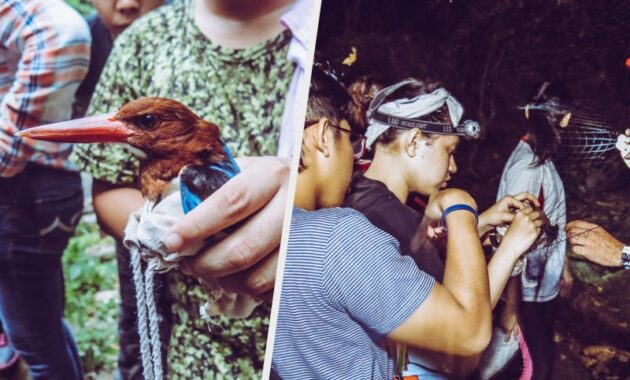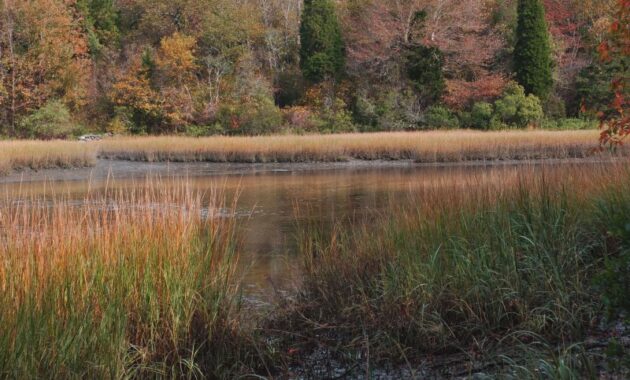Wildlife Habitat Preservation – Our habitat conservation project near Ram Durga Valley in Koppal, Karnataka aims to protect the valuable sloth bear habitat. This land near Ram Durga village, Gangavati Taluk supports rich biodiversity including endangered species like tortoises, leopards, wolf, yellow-throated bulbul and pangolin.
The habitat has been seriously threatened by illegal mining, encroachment and rapid deforestation. These forces, combined with the ritual hunting of local societies, led to the destruction of game in these areas. Aiming to protect and restore habitats, Wildlife SOS purchased nearly 40 hectares of land near Ram Durga village in 2006 to create a wildlife corridor and allow threatened habitats to connect to the forest reserve. By restoring this, Wildlife SOS has ensured the protection of the ecosystem and the biodiversity within it.
In April 2012, the habitat restoration project was extended to an additional 10 hectares with the generous support of BHEL, PSSR, Chennai. In consultation with horticultural experts, saplings of tree and shrub species most suitable for this area were selected and close to 10,000 saplings were planted. We planted Mahuva, Neem, Arjuna, Mango, Amla, Indian Oech, Bamboo, Cream Apple, Indian Laburnum,
Figs, Banian, Jamun, Bhenia, Bodhi and more along a 10 acre habitat restoration area and integrated irrigation to support native wetlands . A borehole, drip irrigation system and solar electric fencing were installed to provide water and protect the area. In addition, members of the local community engaged in leadership and patrol duties.
In a short period of just 2-3 years, the project achieved a 90% plant survival rate. Seedlings that were planted at ½ -1 inch in girth and 2-3 feet tall now average 8-9 inches in girth and 8 feet or more in height. In areas where restoration began earlier, it has been observed that wildlife species have begun to return and use this habitat.
Wildlife Habitat Preservation

Wildlife SOS works with local communities and stakeholders, educating and empowering them to patrol and protect forests. We work to secure agricultural land in areas bordering forests to create safe conservation areas for wildlife.
Habitat Conservation Turquoise Concept Icon Stock Vector
Objective: It aims to protect the wild sloth bear habitat and support the rich biodiversity including endangered species like turtles, leopards, yellow-throated bulbul and pangolins etc.
Restoring habitats for a fair future for wildlife SOS launched the Rewild for Wildlife project to plant native trees. Read more
Open Well Conservation Project Covering open wells in Maharashtra to prevent animals (especially leopard) from falling.
The Dancing Bear Project Eradicating the 400-year-old barbaric practice of ‘dancing bears’ in India and providing life-long care and shelter to the bears we rescue. Read more
An Indian Conservational Success: Saving Habitat For The Endangered Blackbuck
Elephant Conservation and Care Rescuing and rehabilitating captive elephants from abusive conditions and providing lifelong care on their healing journey. Read more
Leopard Conservation We work to alleviate human-leopard conflict and rescue orphaned and injured leopards for lifelong care. Read more
Tribal Rehabilitation Program Enables indigenous communities to have alternative sustainable livelihoods after abandoning their bears. Read more

Mitigating human-bear conflict Protect and provide medical care to bears in India that are vulnerable to conflict, poaching and other threats. Read more
Protecting Australia’s Unique Wildlife: The Importance Of Habitat Preservation
Mitigating Human-Wildlife Conflicts Provide rescue hotlines, assistance and specialized medical care to injured or displaced wildlife. Read more
Anti-poaching The Forest Watch program assists the Forest Department and law enforcement agencies in cracking down on wildlife traders, poachers and smugglers. Read more
Mitigating Human-Elephant Conflict Mitigate conflict with wild elephant herds and provide education in the Chhattisgarh region of India. Read more
Wildlife Research and Conservation SOS recognizes that human care and understanding is key to saving wildlife and protecting habitats Read more
Pdf) A Case Study Of Habitat Conservation Plans And The Protection Of Snags And Coarse Woody Debris On Industrial Forest Lands1
Wildlife education and awareness SOS organizes workshops with local communities and law enforcement agencies to deal with human and wildlife. Read more
We use cookies on our website to provide you with the most relevant experience, remember your preferences and repeat visits. By clicking “Accept”, you consent to the use of ALL cookies. Wildlife SOS does not sell personal information.
This website uses cookies to improve your experience as you navigate the website. Of these cookies, the cookies categorized as necessary are stored in your browser because they are necessary for the operation of the basic functions of the website. We also use third-party cookies that help us analyze and understand how you use this website. These cookies will only be stored in your browser with your consent. You also have the option to disable these cookies. However, opting out of some of these cookies may affect your browsing experience.

Necessary cookies are absolutely necessary for the website to function properly. This category only includes cookies that provide basic functionality and security features of the website. These cookies do not store personal data.
Announcing Together For Wildlife Scholarships!
All cookies that may not be specifically required for the operation of the website and are used specifically to collect user personal data through analytics, advertisements, other embedded content are called non-necessary cookies. It is mandatory to obtain the user’s consent before running these cookies on your website. Elsa Scott is a marketing coordinator and copywriter at The Best Bees Company. Graduated from Boston University School of Communication in 2022 with a BA in Journalism. Elsa has extensive experience using research and interviews to produce compelling, engaging content. She writes the Best Bees newsletter, hive tracking emails, website content and blog articles. She also works closely with the research and development team as an editor for the best bee articles in scientific publications.
Climate change, industrialization and human population growth have had drastic effects on our planet. We can see these effects in our wetlands, tundra, deserts, forests, grasslands, oceans and beyond. Humanity is currently using the equivalent of 1.75 Earths to sustain our current lifestyle and our planet’s ecosystems cannot keep up with our demands.
According to the United Nations, between 2015 and 2020 we are losing about 10 million hectares of forest (an area the size of Iceland) annually, and globally more than two-thirds of our ocean ecosystems are now damaged, degraded or modified.
This loss of ecosystems and species leads to a loss of benefits for people and nature. In economic terms, it is estimated that $10 trillion of global GDP could be lost by 2050 if ecosystem services continue to decline.
The Habitats Trust
Habitat restoration, along with the protection of endangered species, is a key initiative necessary to combat ecological degradation and mitigate the adverse effects of climate change.
The UN defines habitat restoration as “the process of halting and reversing degradation, resulting in improved ecosystem services and restoration of biodiversity. Ecosystem restoration involves a broad continuum of practices, depending on local conditions and social choices.” Restoration allows sites to re-provide food and shelter for wildlife, as well as provide ecological services such as reducing runoff, increasing water filtration rates, improving carbon sequestration, and more.
Now, the reality of the modern age means that returning natural areas to some idealized state of the past is an impossible goal. We cannot turn Washington, DC back into a swamp, or any of our metropolitan areas back to their original state. The goal of habitat restoration is to correct or mitigate harmful human impacts and promote diverse, resilient natural areas that will thrive now and in the future.

These restored landscapes are important not just for their beauty or biodiversity, but because they provide essential ecosystem services – clean air and water, flood control, fertile soil, provision of natural resources, etc.
Quebec Wildlife Habitat Conservation
When habitats cannot be restored to their original size or condition, smaller measures can be taken to better secure wildlife and the ecosystem. For example: we may not be able to remove our highways, but we can build natural bridges over them for wildlife to cross. Many of the more common restoration activities include planting trees, restoring corals, restoring forests, eliminating invasive species, or creating green spaces. All these measures combat habitat loss in their own way.
Habitat loss is pretty self-explanatory – it’s the reduction or destruction of places where a particular species or group of species can thrive. Urbanization, deforestation, resource exploitation, agriculture, trawling and pollutant discharges have contributed to habitat loss. Habitat loss can also occur due to environmental changes or disasters, such as volcanic eruptions, fires, tsunamis, or changes in climate or sea level.
The numbers and statistics of habitat loss and environmental degradation are staggering. Here are some facts that put the scope of this problem into perspective:
Habitat destruction is caused by wetland filling, river dredging, logging, trawling, land development for urbanization, and the conversion of wild land to agricultural land.
Strategies For Protecting Wildlife
Habitat fragmentation is the fragmentation of natural habitats, creating fragments that may not be large or connected enough to support species that once thrived in a larger area. Fragmentation is caused by roads, urban development, dams, water diversion, etc. Habitat fragmentation affects not only the species that live in the area year-round. It also makes it difficult for migratory species to find places to rest and feed
Wildlife preservation act, wildlife preservation, preservation of wildlife, habitat preservation, wildlife preservation organizations, wildlife habitat, national wildlife preservation, habitat preservation definition, wildlife preservation near me, what is habitat preservation, article on wildlife preservation, wildlife preservation jobs
- Conservation Education Programs 2023 - August 19, 2024
- Endangered Species Protection - August 16, 2024
- Wildlife Habitat Preservation 2024 - August 15, 2024

